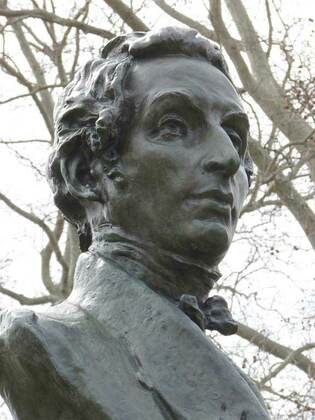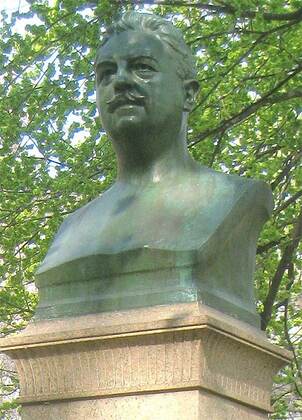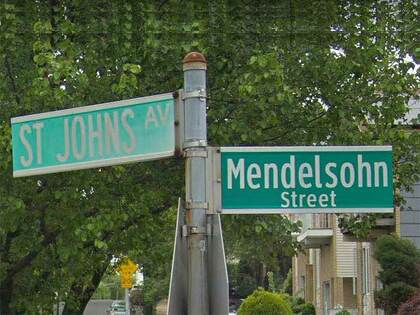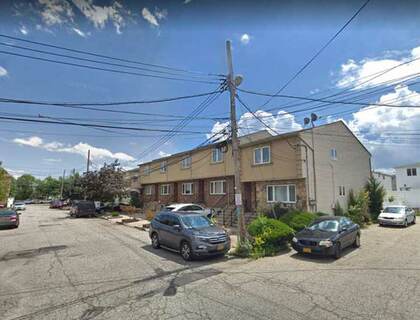Concert Grove’s a formal European-style garden designed to look out over a small island in Prospect Park Lake containing a performance stage where the popular bands of the day would play. There were large areas for carriages to park on each side of the Grove. It turned out that the acoustics weren’t the best, and concerts moved to the Music Pagoda in the Nethermead, ultimately the Prospect Park Bandshell. The stage area was torn up, the island attached to the mainland by fill, and the Wollman Rink installed in its place. Concert Grove was reinstalled along with the new Lakeside Skating Rink from 2012-2015.
Even for non-fans of classical music, Beethoven is an immediately recognizable figure, with his stern demeanor and shock of white hair. Beethoven’s regarded by many as one of the three greatest composers of classical music, along with Johann Sebastian Bach, who came before him, and Wolfgang Amadeus Mozart, a contemporary. His most passionate compositions were borne from rage and sadness; he had unfulfilling relationships and increasing deafness. By the mid-1810s, as he was approaching his peak of creativity, he could hear his music only in his head.
Possibly his most famous work, his Ninth Symphony, was finished by 1824 and was inspired by his friend Johann Friedrich von Schiller’s poem “Ode To Joy.”
In many ways, Beethoven can be considered the first musical rebel. Along with his friend Schiller, he was an implacable champion of freedom and human rights and refused to bend his knee to nobility and aristocracy. He criticized Goethe for being “too fond of the atmosphere of the courts.”
Prospect Park’s formal garden remains, with busts of Beethoven (looking cranky as he usually does in his portraits), Edvard Grieg (Norwegian composer of the Peer Gynt Suites and “Hall of the Mountain King”), and Mozart. Crashing the composer party is Irish writer Thomas Moore, who can also be found in Central Park; known more for poetry and prose, he was best known for writing “Minstrel Boy.” A second bust of Beethoven, by sculptor Henry Baehrer, is found in Central Park near the Naumberg Bandshell, placed in 1884.

Also in the Concert Grove is Mozart’s cousin by marriage, Carl Maria von Weber, a composer, conductor and pianist, one of the founders of the Romantic style. Carl Maria? In many European countries, a common practice is to name boys Maria (or a derivation) in honor of Mary, the mother of Jesus.

Victor Herbert was born in Dublin, and became a cellist in Richard Strauss‘ orchestra in Vienna. After moving to the USA in 1886, he gravitated to what we’d call pop music today, becoming a conductor and composer; he wrote the music for Naughty Marietta and Babes in Toyland, and composed songs still heard widely today such as “Kiss Me Again” and “Ah, Sweet Mystery of Life.” He was a founding member of the American Society of Composers, Authors and Publishers (ASCAP). His bust, by Edward Quinn, was installed in Central Park in 1924.
“Childhood’s joyland, mystic, merry Toyland
Once you pass its borders you can never return again.”

Though they show up on maps as early as the 1940s, it wasn’t until the last couple of decades that a group of streets off St. Johns Ave. west of Tompkins Ave. in Rosebank named for classical composers (Beethoven, Wagner, Schubert, Anton Rubenstein, Richard Strauss, and Felix Mendelssohn—misspelled on his street sign) were developed.
Other clusters of streets in Staten Island are named for European rivers and regions Mosel(le), Elbe, Weser, Neckar, Oder, Rhine (Grasmere); Prohibition Party Presidential candidates Neal Dow and Clinton B. Fisk—and “dry” 19th Century states (Westerleigh); and in Heartland Village in the island’s southwest, the street naming system using the names of astronauts from the Mercury, Gemini and Apollo space programs of the 1960s. The theme includes James McDivitt, James Lovell (the commander of the Apollo 13 mission that broke down en route to the moon), Wally Schirra, Frank Borman, Deke Slayton, Pete Conrad (the third man on the moon), John Glenn (the first American to orbit the Earth in space), Scott Carpenter, Alan Shepard (the fifth man on the moon), Gordon Cooper, and Gus Grissom.

Last, along Arthur Kill Rd. west of Abingdon Ave. in northern Great Kills are two tiny lanes named Abbey Rd. and Lennon Ct. Built in the 1980s, they’re the only two Beatles-related street names in New York City, at least to date. If these streets still exist 100 years from now, will their namesakes be remembered?
—Kevin Walsh is the webmaster of the award-winning website Forgotten NY, and the author of the books Forgotten New York (HarperCollins, 2006) and also, with the Greater Astoria Historical Society, Forgotten Queens (Arcadia, 2013)

